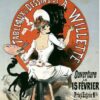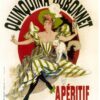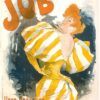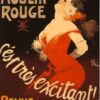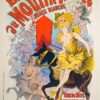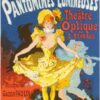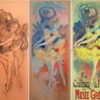
The Art of Women’s Liberation: Nathalie Rattner
Nathalie Rattner is an award winning Canadian artist whose works have appeared in juried competitions, art shows around the world, network television shows, national magazines, and several commercial products.
Nathalie’s highly versatile skill set and her ability to move fluidly among an array of styles and subject matter have led to her involvement in the design of product packaging, surf paddles, coloring books, vintage style paper dolls, book covers, patterns for fashion brands and other commercial endeavors. For the last few years, she has collaborated with the UK-based company Bond & Knight, which won the 2015 BTAA Fashion Accessory of the Year award, to create a line of bespoke men’s leather wallets that are sold internationally.
She is most recognized for her vintage style pin-up pieces and her men’s fashion illustrations. Carrying on in the tradition of pin-up art created by such greats as Vargas, Olivia and Petty, Nathalie is able to capture a vintage feel mixed with a modern take on the subject matter in each piece. She has worked with some of the industry’s top models such as Playboy Playmate of the year 2011 Claire Sinclair, Mosh, Masuimi Max and actress/singer Renee Olstead, just to name a few.
The art of women’s liberation
You may not know his name or the role he played in women’s liberation, but you most certainly have seen and fallen in love with his Moulin Rouge posters. Jules Chéret was a French lithographic artist who made his mark on the world in the late 19th and early 20th centuries. He quickly became known as “the father of poster art” and later “the father of women’s liberation”. His depictions of women defied the social norms of the time, inspiring women to stand up, organize and fight for equal rights.
Before the rise of Chéret, women were portrayed in art as either puritans or ladies of the night. Chéret shattered these stereotypes by painting strong, powerful, elegant, sexy, self-assured, carefree women in low-cut bodices who smoked, danced, drank wine and enjoyed life. Women found a sense of freedom in these images, which influenced a growing atmosphere in Paris where women were able to engage in activities that were formerly considered taboo.
The women painted by pin-up artist George Petty were called ‘Petty Girls’, while Chéret’s women became known as ‘Cherettes’. ‘Cherettes’ were so popular and widely seen that Parisians felt that Chéret was the artistic voice of the times.
The Chéret style that we know and love today started coming to life in 1859 when he left France for London to set up his own business, while continuing his training in color lithography. He was in the middle of the 2nd industrial revolution, where new printing techniques (especially in lithography) were being developed. By the end of the 19th century, extensive distribution of illustrations through magazines, books, posters and a new free press had begun. Before this, the lithographic process was slow and expensive, with only hints of color added by hand; nothing like the colorful explosions with which Chéret would soon dazzle the world.
By combining the artistic knowledge he gained in France with British poster techniques and poster design, Chéret was able to create a unique style that would change the face of advertising and poster art forever.
Chéret moved back to Paris in 1866 to set up a printing business and quickly became the most sought after artist of the time after the success of his first poster, “La biche au bois”. He created advertisements/posters for music halls, café-concerts, touring play companies, cabarets and theaters. His most notable clients included the Olympia restaurant, Théâtre de l’Opéra, Alcazar d’Éte, the Folies Bergère, and the Moulin Rouge.
Riding high on his success, Chéret started to expand his clientele, taking on work for a satirical weekly called Le Courrier français and diving into the world of commercial products like soaps, perfumes, beverages/liquors, cosmetics and pharmaceutical products. He eventually added railroad companies and a number of manufacturing businesses to his ever growing clientele. With his prolific nature and colorful posters, he literally brought art to the streets.
Here’s an example of how a lithographic poster is created. This particular poster is called “Pantomimes Lumineuses” and shows the progression of color proofs that it takes to achieve the final look.
I also came across this lovely example that I believe shows one of the original sketches that was the basis for this piece. As an artist, I’ve always been intrigued at how a piece of art is created. Each artist has their own unique way of creating their work and I’ve never come across two who have identical processes. It’s almost like a fingerprint, never duplicated. Like Chéret, I’ve also seen the benefits of experimenting with different processes, mediums and techniques; such experimentation sometimes leads to a style or technique that helps you create a unique look to your work. Being an artist is a bit like being a scientist. You have an idea that you want to explore and through trial, error and happy accidents, you just might happen across something new that will push your artwork to a new level.
In 1890, Cheret received the Légion d’honneur award from the French government for his outstanding contributions to the graphic arts. His work has inspired artists, women and society to this day.
Throughout history, artwork has played a powerful role in shaping society. Women are so much more than just sexy objects or housewives, and through ever evolving depictions of women in art, women have been empowered to fight for equality and freedom of expression. One of the best examples is the “Rosie the Riveter” poster created by artist J. Howard Miller. Originally created to help the war effort, the poster has taken on a life of its own and women today use it as a symbol of female strength.
I once heard someone say that “when you can see it, you can achieve it”, and I can’t think of a better example than artwork. It can help to move a society forward, and to inspire people to dream big and pursue their dreams, even if those dreams are not in line with society’s current norms. Art may be one of the quieter forms of artistic expression, but its impact can last for generations.


